This post may contain affiliate links. Please read our disclosure policy.
Who says you have to order out to enjoy a mouth-watering individual sized pepperoni pizza? With this personal Pepperoni Pizza recipe, you’re in for a treat. Picture a pizza featuring a crisp yet tender homemade crust, slathered with rich, zesty homemade sauce, and generously layered with ooey-gooey cheese and spicy pepperoni. And the best part? It’s scaled down to serve one or two people, making it the ultimate pizza night treat.
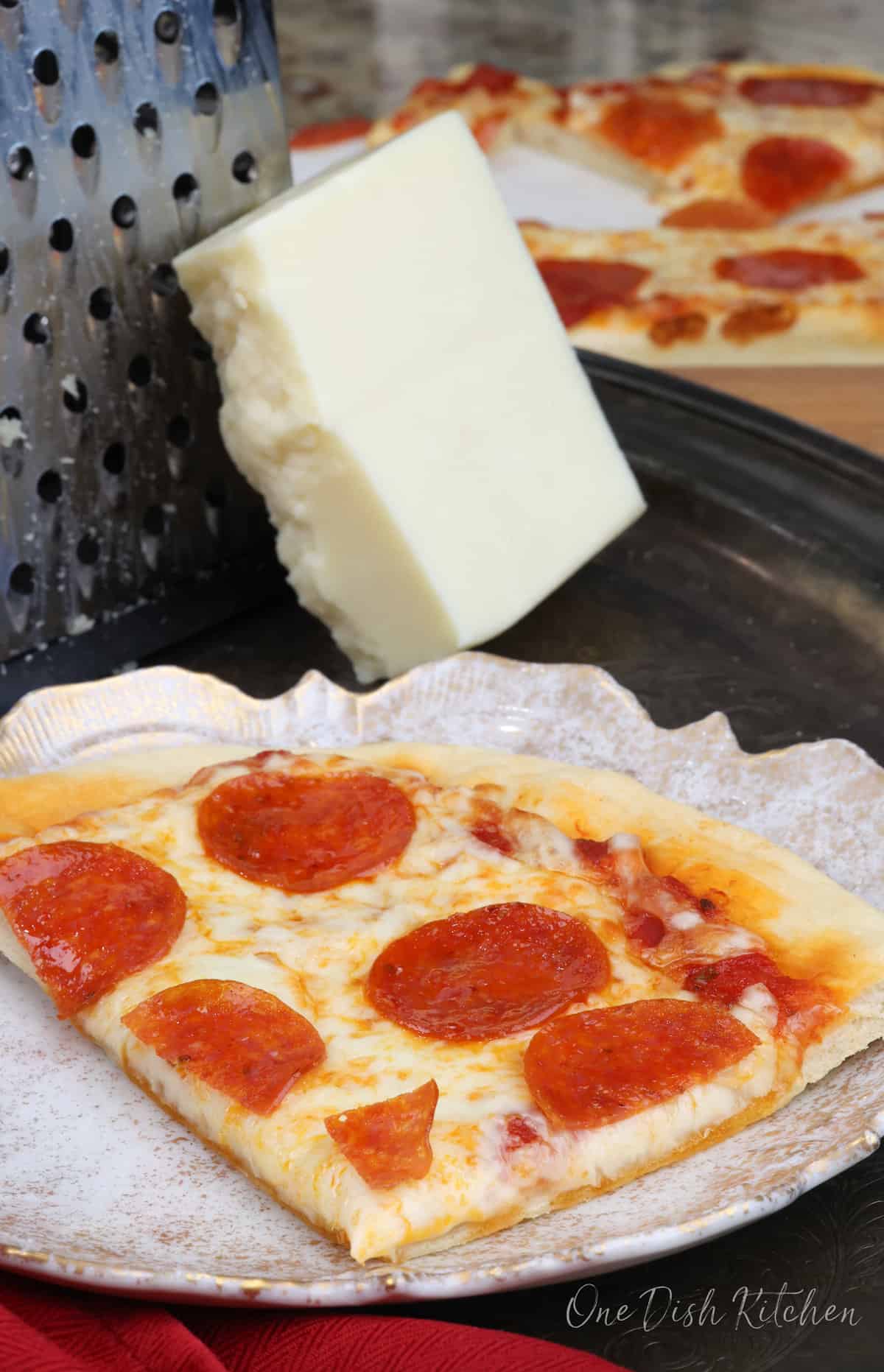
Enjoy your personal pizza with a crisp, fresh Caprese Salad, a tangy Italian Pasta Salad, or a warm, comforting bowl of Tomato Soup.
RELATED: Game Day Recipes For One
Table of Contents
- Why You’ll Love This Pepperoni Pizza Recipe
- What Is A Personal Pizza?
- Ingredients
- Best Toppings For Pepperoni Pizza
- How To Make A Pepperoni Pizza For One Or Two
- Storing Your Leftover Personal Pan Pizza
- Expert Tips
- Frequently Asked Questions
- Explore More Mini Pizza Options
- Ways To Use Leftover Ingredients
- Personal Pepperoni Pizza Recipe
Why You’ll Love This Pepperoni Pizza Recipe
- Foolproof: The crust is homemade but ultra-easy, requiring just a bowl and a spoon.
- Flavor-packed: Our quick homemade sauce delivers intense flavors that elevate the pizza.
- Versatile: This recipe works for both a 12-inch round thin-crust pizza and a 9×13-inch rectangular pizza.
- Customizable: Perfect for adding extra toppings or adapting to various dietary needs.
- Doubles Easily: Need more pizza? Just double the ingredients for a larger crowd.
What Is A Personal Pizza?
A personal size pizza is a smaller version of a traditional pizza, typically ranging from 7 to 12 inches in diameter. It’s the perfect size for an individual or for sharing between two people, offering all the flavors and textures you love, without the leftovers.
Ingredients
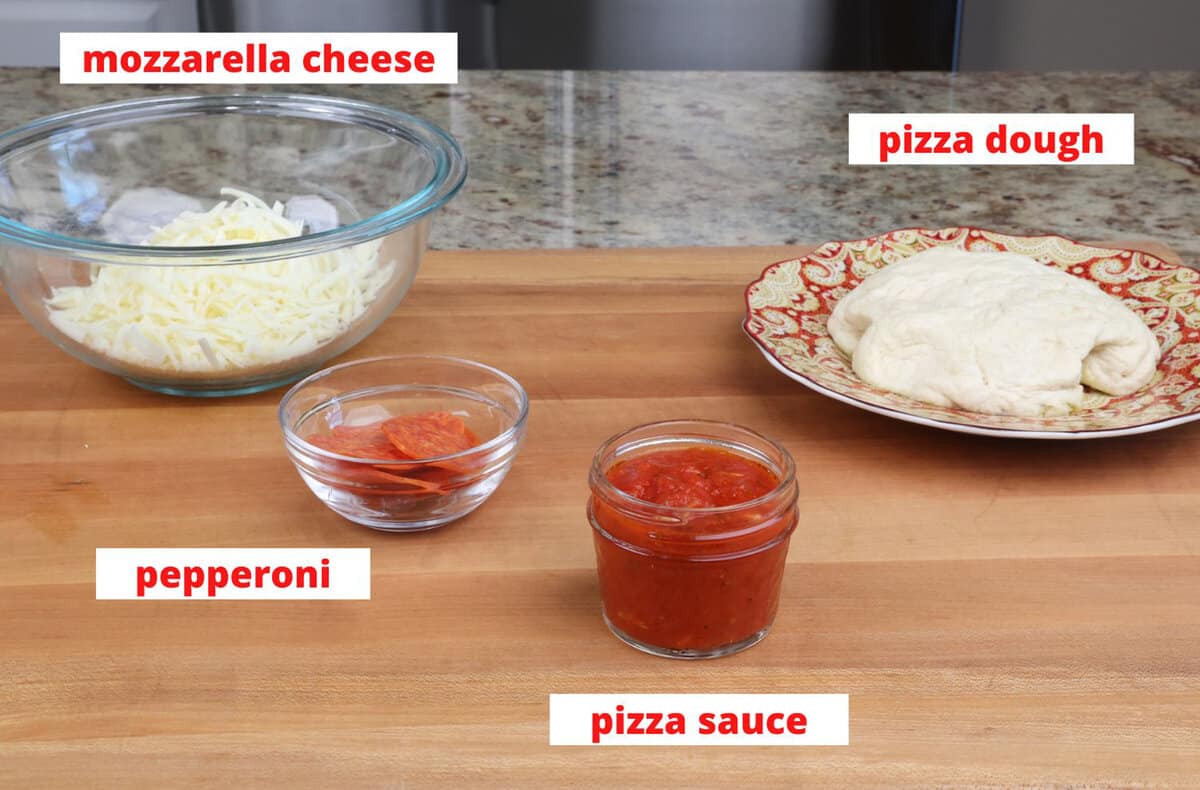
If you have any ingredients leftover from this homemade pepperoni pizza recipe, check out our Leftover Ingredients Recipe Finder.
For the pizza dough:
- Yeast: Yeast is a critical component in basic pizza dough. Use either active dry yeast or instant yeast. For convenience, I love using Platinum Yeast from Red Star (instant yeast). Instant yeast or quick-rise yeast has been quickly dried. Instant yeast DOES NOT need to be rehydrated in water so you can just add it to the flour mixture. If using active dry yeast, I like using Fleischmann’s Active Dry Yeast. Active dry yeast has been dried and given an inactive coating. Active dry yeast MUST be dissolved in warm water before mixing with the flour. For best results, use the yeast prior to the best if used by date stamped on the package. Leftover yeast can be used to make a small loaf of French Bread.
- Water: We use ⅓ cup of warm water which seems to be the perfect amount. Use warm water, about 100-110°F. Water over 130°F will kill the yeast.
- Flour: All-purpose flour is our go-to, but bread flour can offer a chewier crust if you prefer that texture.
- Sugar: A touch of sugar boosts yeast activity and tenderizes your dough, making it softer and fluffier.
- Salt and garlic powder: Don’t overlook these flavor enhancers; they elevate the taste of your pizza crust.
- Olive oil: One tablespoon of extra virgin olive oil adds wonderful flavor to the dough. Extra virgin olive oil is the least processed form of olive oil. It is an unrefined oil and the highest-quality olive oil you can buy. Because of the way extra virgin olive oil is made, it retains a more true olive taste. It also contains more of the vitamins and minerals found in olives.
For the pizza sauce:
- Olive oil: A dab of olive oil is all you need to sauté the garlic and release its aroma.
- Garlic: Since I love bits of fresh garlic in my sauce, I use 1 clove of garlic and simmer the sauce on the stove. You can actually make pizza sauce in 5 minutes by using ⅛ teaspoon of garlic powder instead. There is no need to simmer the sauce if you’re using garlic powder. Just combine the ingredients in a bowl and whisk them together.
- Canned tomatoes: Use canned crushed tomatoes. You can also use whole, peeled canned tomatoes. Pulse them briefly in a food processor or a blender to smooth out the texture. Consider using leftover canned tomatoes in a single serving of Meat Sauce or Caponata.
- Tomato paste: Tomato paste is simply concentrated tomatoes. A small amount adds a tremendous amount of flavor. Look for tomato paste that comes in a tube. You can find it in the same section of your grocery store where cans are found. A tube stays good in the refrigerator for much longer than canned. You can also freeze the leftover paste in ice cube trays. When frozen, pop the cubes out of the tray and store them in a zip-top bag in the freezer. Leftover tomato paste can be used in Lasagna Soup and Baked Black Bean Tacos.
- Sugar: A pinch can balance the tomato’s acidity, making your sauce more rounded in flavor.
- Seasonings: Dried basil and salt are simple yet effective for imbuing your sauce with herbal notes.
For the pizza:
- Mozzarella cheese: Shred your own cheese for superior meltability. Pre-shredded options contain anti-clumping agents that can affect the texture. Consider using any leftover cheese in an Italian Chopped Salad, Stuffed Shells, and in a Hot Spinach Dip.
- Pepperoni: Aim for about 1 ounce, which is roughly 15 slices, to cover your personal pizza evenly. Any extra pepperoni can be used in a single serving Pizza Bowl or in a mini Muffuletta!
By understanding the roles of these ingredients, you can make informed decisions for substitutions, ensuring your homemade pizza is always a hit.
Best Toppings For Pepperoni Pizza
Elevate your homemade pepperoni pizza by adding a variety of scrumptious toppings. Whether you love veggies, extra meat, or different kinds of cheese, there’s no shortage of options to make your pizza uniquely delicious. Here are some topping ideas worth considering:
- Sliced Bell Peppers: Add a burst of color and crunch.
- Olives: For a salty, briny kick, black or green olives do wonders.
- Additional Cheeses: Mozzarella is classic, but why not introduce some sharp cheddar or smoky gouda?
- Cooked Sausage: For a meat lover’s dream, add some cooked sausage.
- Grilled Chicken: A leaner meat option that complements the pepperoni.
- Crispy Bacon Bits: For smoky, crunchy goodness, sprinkle some cooked and crumbled bacon.
- Arugula: Add this leafy green for a peppery touch and a splash of color.
Mix and match these toppings to create your dream pepperoni pizza!
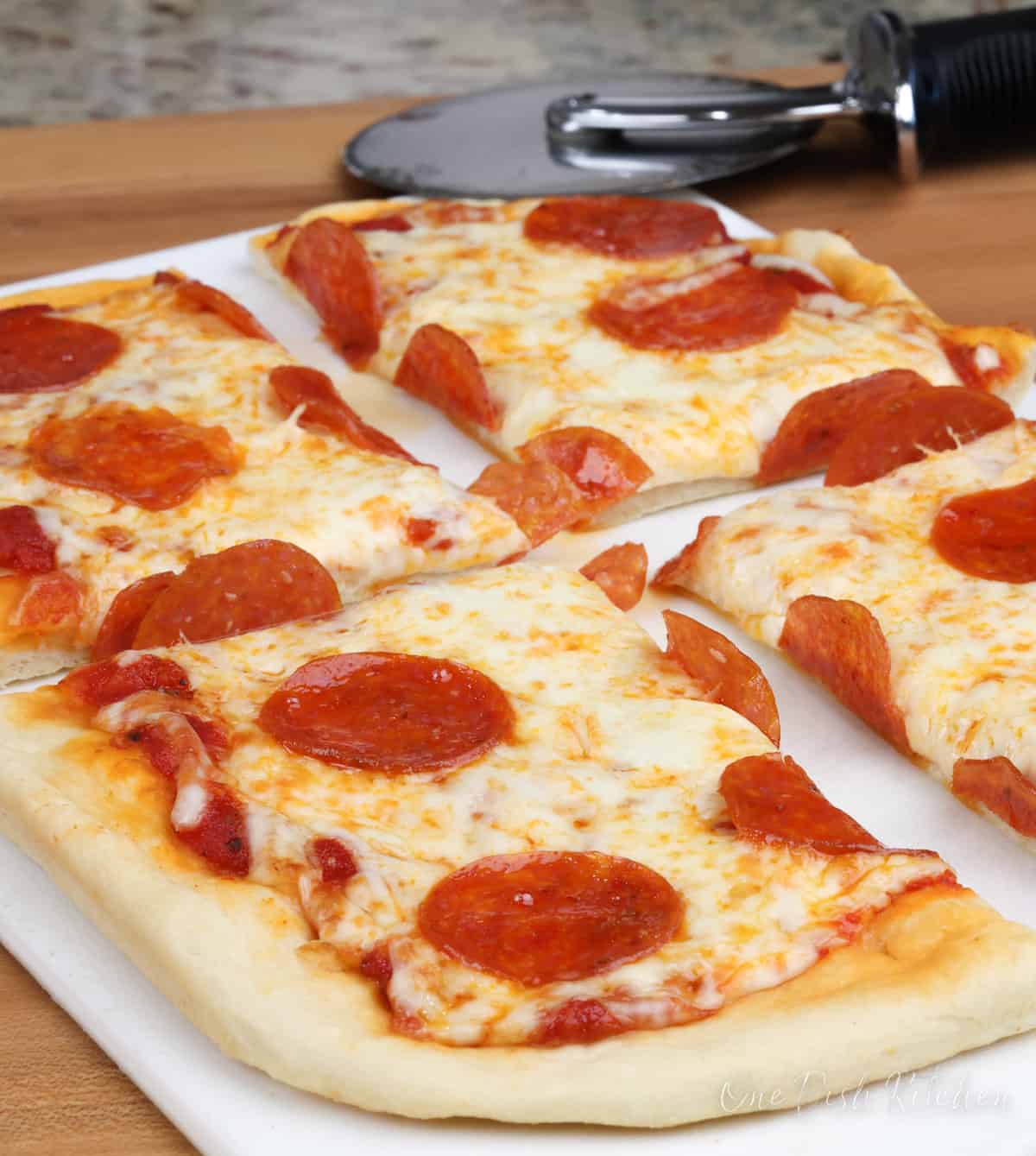
How To Make A Pepperoni Pizza For One Or Two
These step-by-step photos and instructions help you visualize how to make a small pepperoni pizza. See the recipe below for ingredient amounts and full recipe instructions.
Make the dough
Use our personal pizza dough recipe which makes THE BEST pizza dough!
- Add ⅓ cup of warm water to a large bowl.
Pro Tip: An instant-read thermometer is an accurate way of checking water temperature. The water should be between 100-110°F. If the water is too warm (over 130°F), it will kill the yeast. If you don’t have a thermometer, feel the water with your fingertips. Water should be comfortably warm, not at all hot.
- Add yeast to the water. Wait about 2 minutes until you see bubbles forming. The mixture should look slightly foamy.
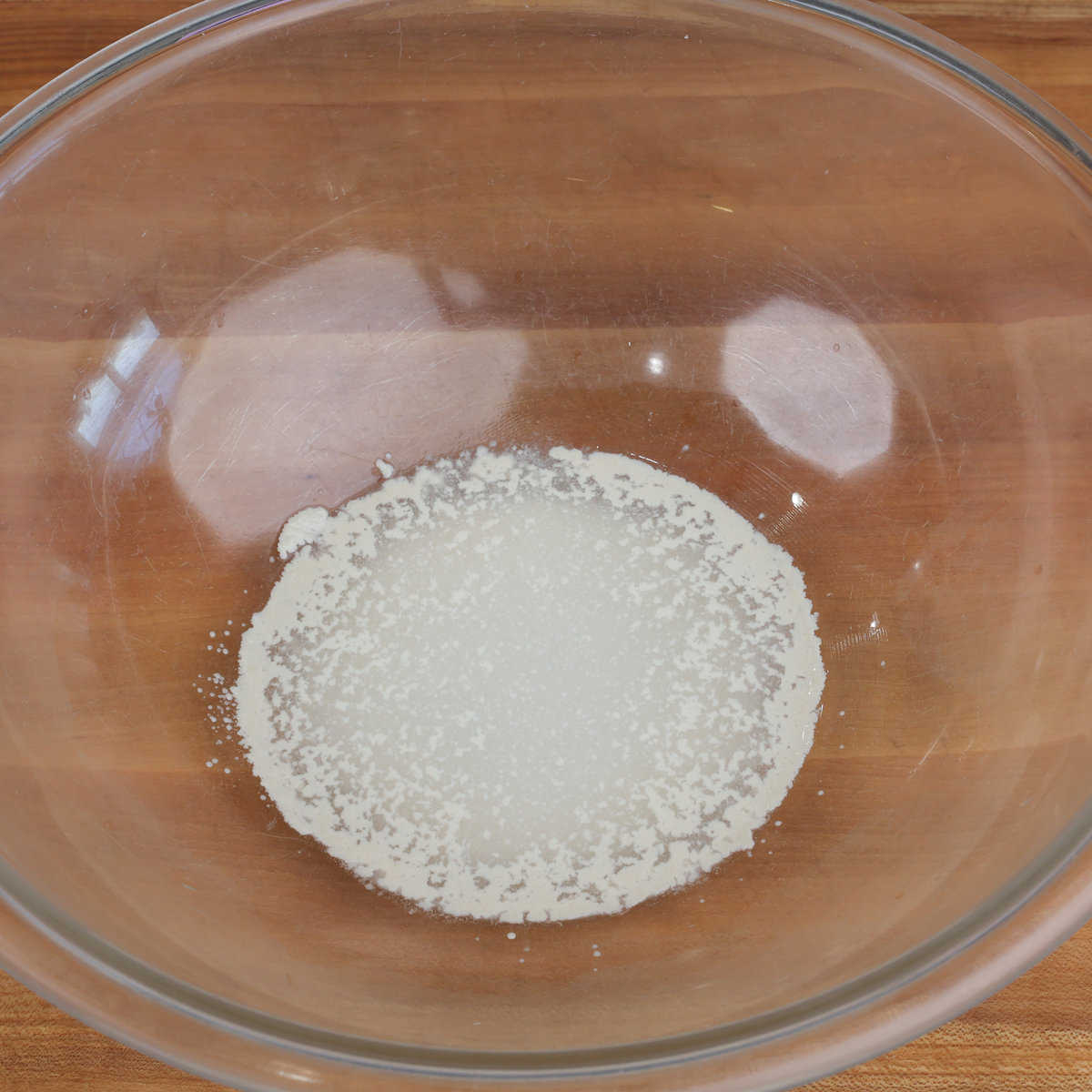
- Stir in the sugar, salt, garlic powder, and olive oil.
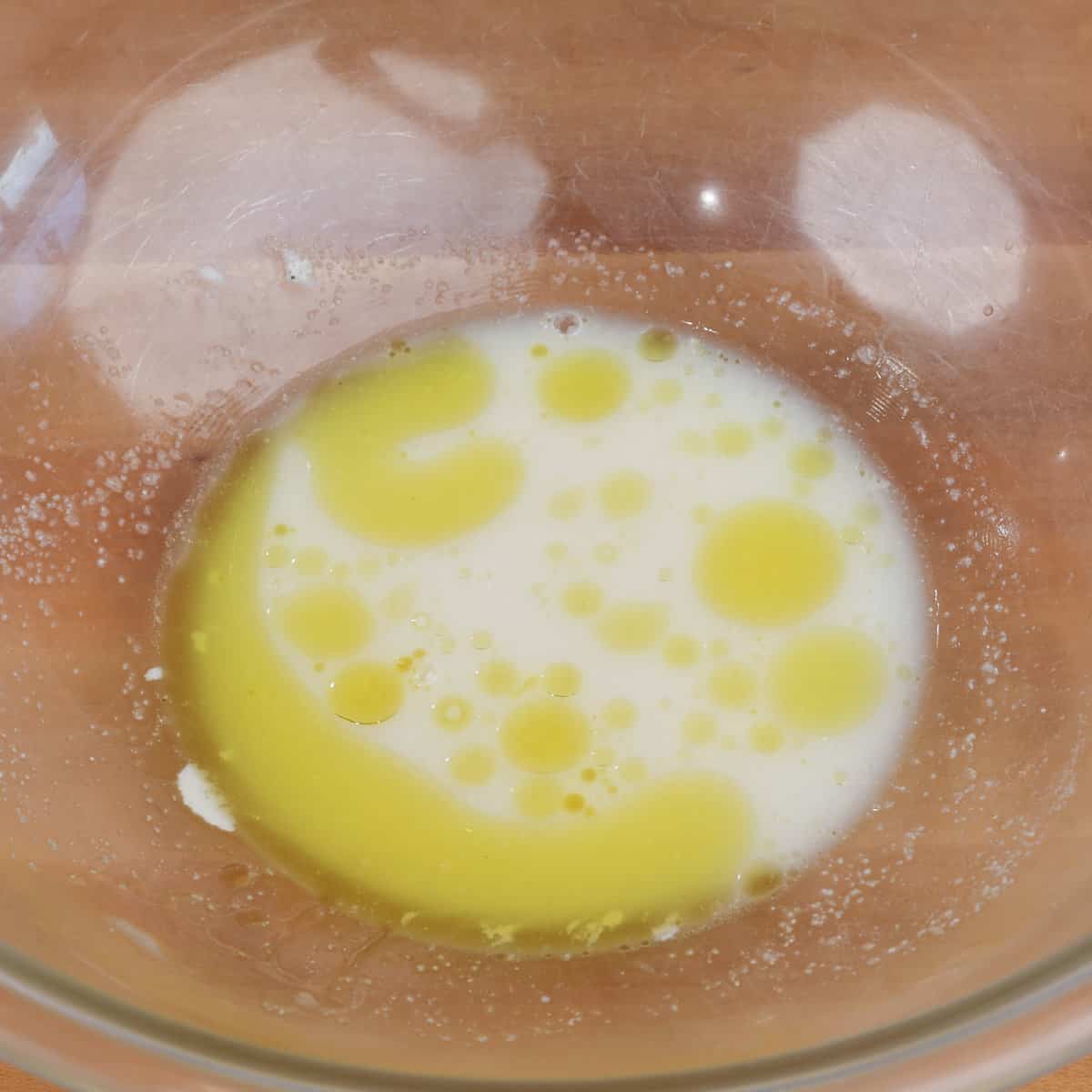
- Add in the flour and mix the dough with a spoon until the dough comes together. If necessary, add a bit more flour so the dough can be worked without feeling too wet.
Pro Tip: Your dough will be shaggy and lumpy but will become smooth after kneading.
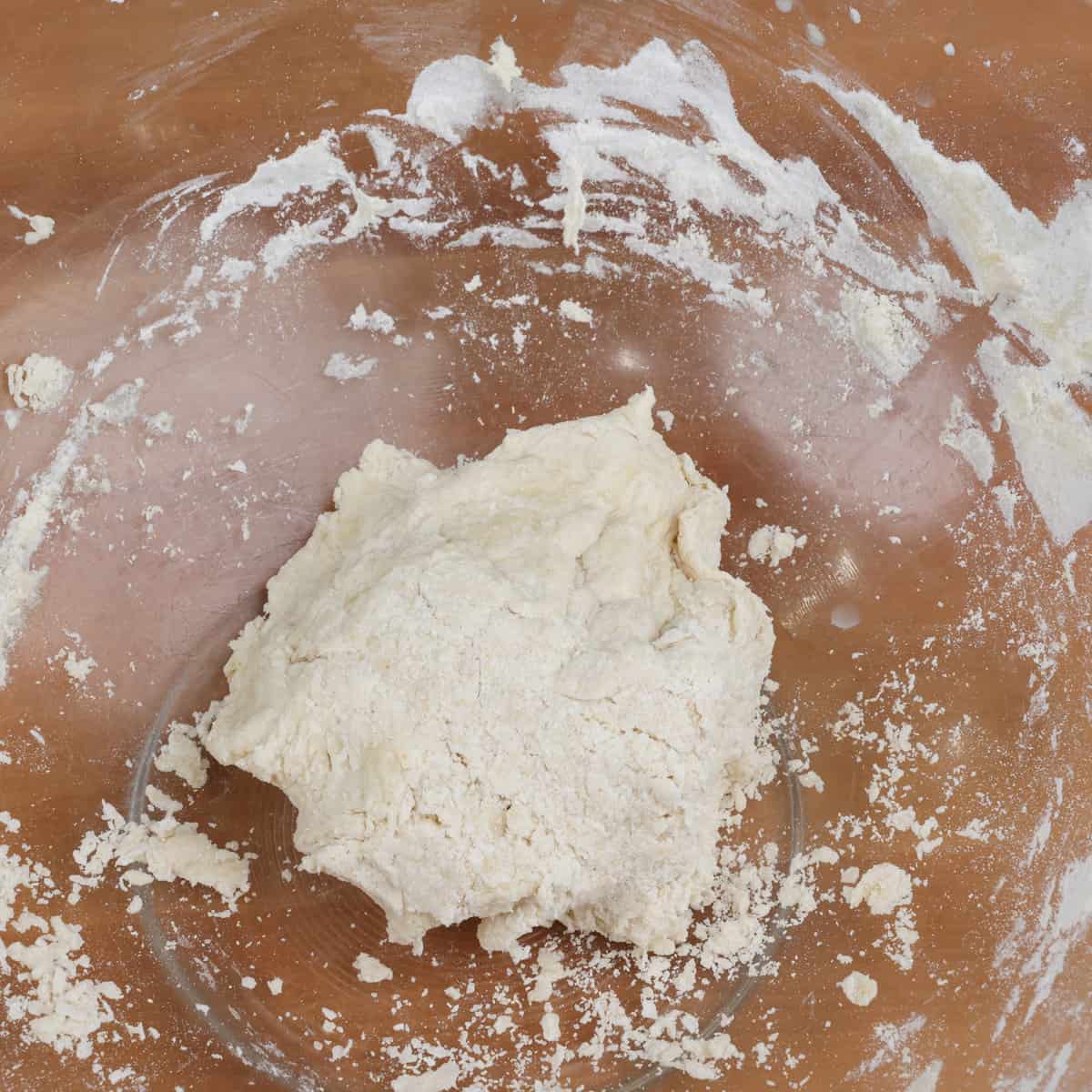
- Turn the dough out onto a lightly floured surface. With lightly floured hands, knead the dough for 3 minutes. Add more flour, a teaspoon at a time, if the dough remains too sticky to knead. After kneading the dough should feel soft and smooth.
Pro Tip: Kneading the pizza dough helps to build up gluten. Gluten is what helps create a stretchy texture which will allow the dough to stretch without breaking. When testing this recipe, about 3 minutes was the proper time needed.
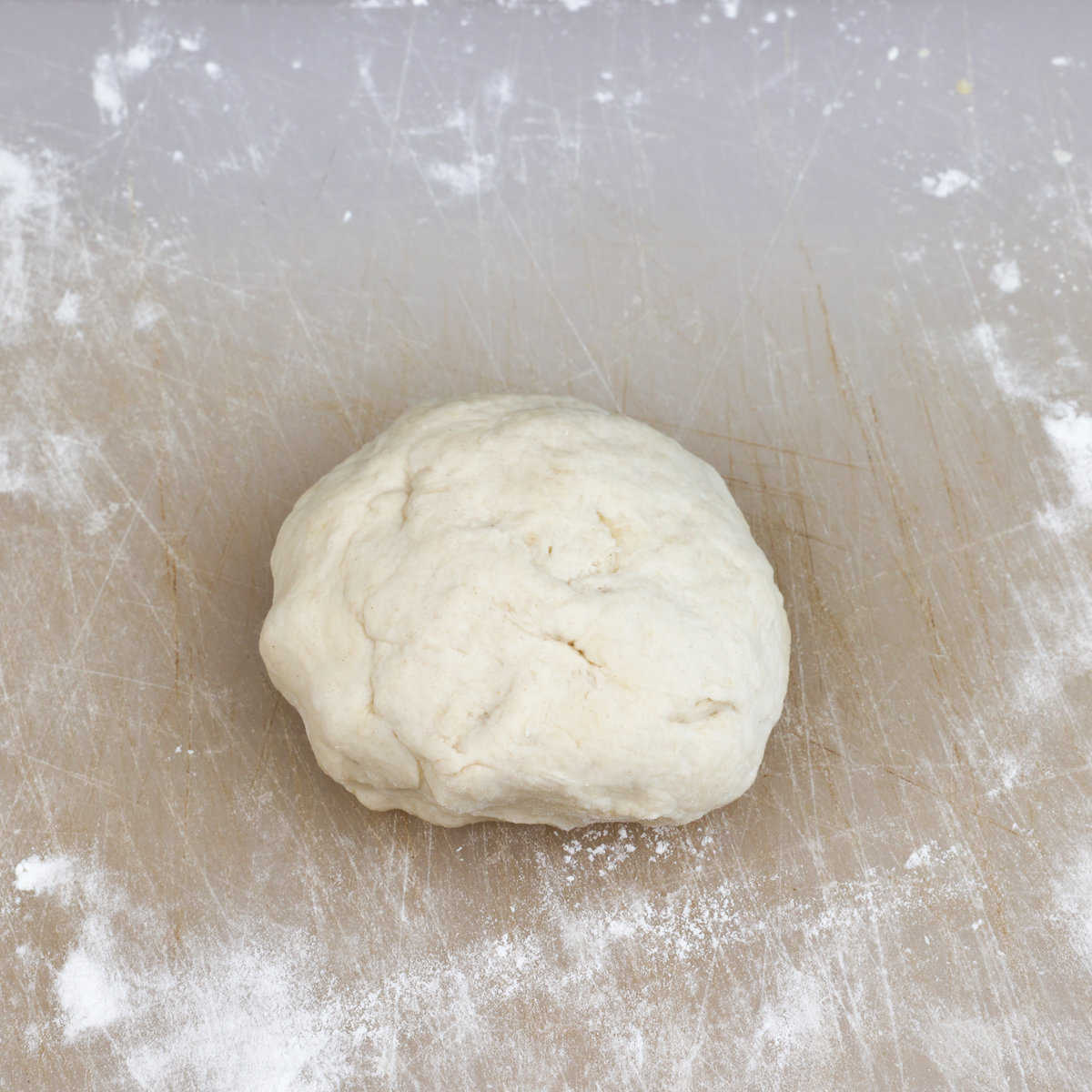
- Lightly grease a large bowl with oil. Place the ball of dough in the bowl, turning it to coat all sides in the oil. Cover the bowl with plastic wrap, aluminum foil, or a clean towel. Allow the dough to rise in a warm, draft-free place until it has doubled in size, about 30 minutes.
Pro Tip: Dough won’t rise if the room you’re using is too cold. I often put the dough in my oven to rise. To do this, preheat your oven for 1 minute, turn it off, and place the dough bowl inside. Ensure the oven doesn’t get too hot or you’ll need to wait for it to cool off. Sometimes, just leaving the light on in your oven will provide enough warmth without turning on the oven.
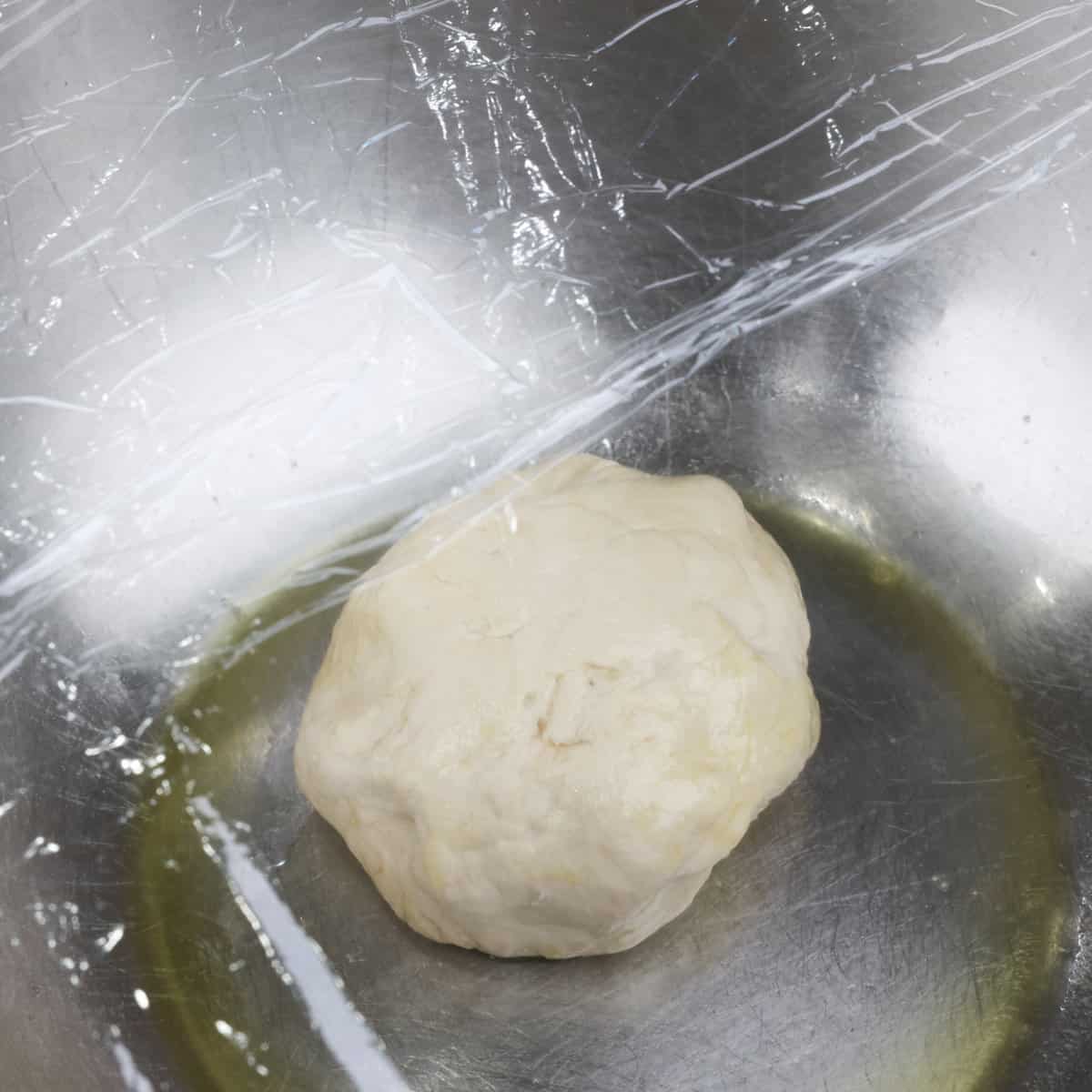
Make the pizza sauce
Use our small batch pizza sauce recipe which is the perfect amount to use on a personal pizza!
Pro Tip: The perfect time to make the sauce is when the dough is resting and rising.
- Heat olive oil in a 1-quart saucepan over medium heat. Add minced garlic and cook, stirring frequently for 30 seconds.
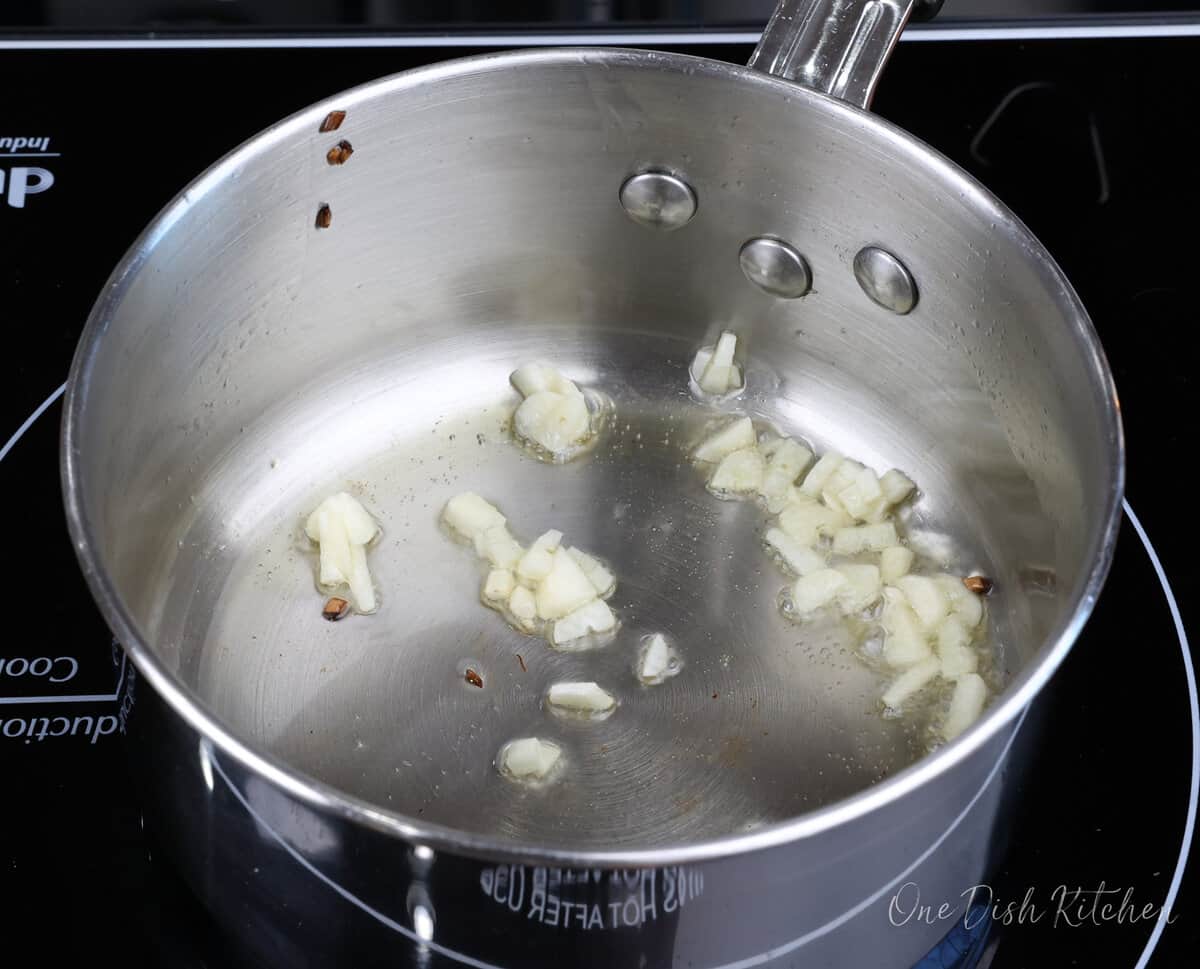
- Add crushed tomatoes, tomato paste, sugar, dried basil, and salt. Stir to combine.
- Reduce the heat to low and simmer for 15 minutes, stirring occasionally.

Assemble the pizza
- Punch the dough down to release the trapped air. Transfer the dough to a lightly floured work surface. With lightly floured hands or a rolling pin, roll the dough out into a circle or press it into a lightly greased small rectangular pan.
Pro Tip: I find that a 9×13-inch baking sheet is a perfect size to use to make a thin crust pizza. If you’re having trouble getting the dough to roll out as thin as you’d like, let the dough rest under a kitchen towel for 10 minutes, then continue to roll out.
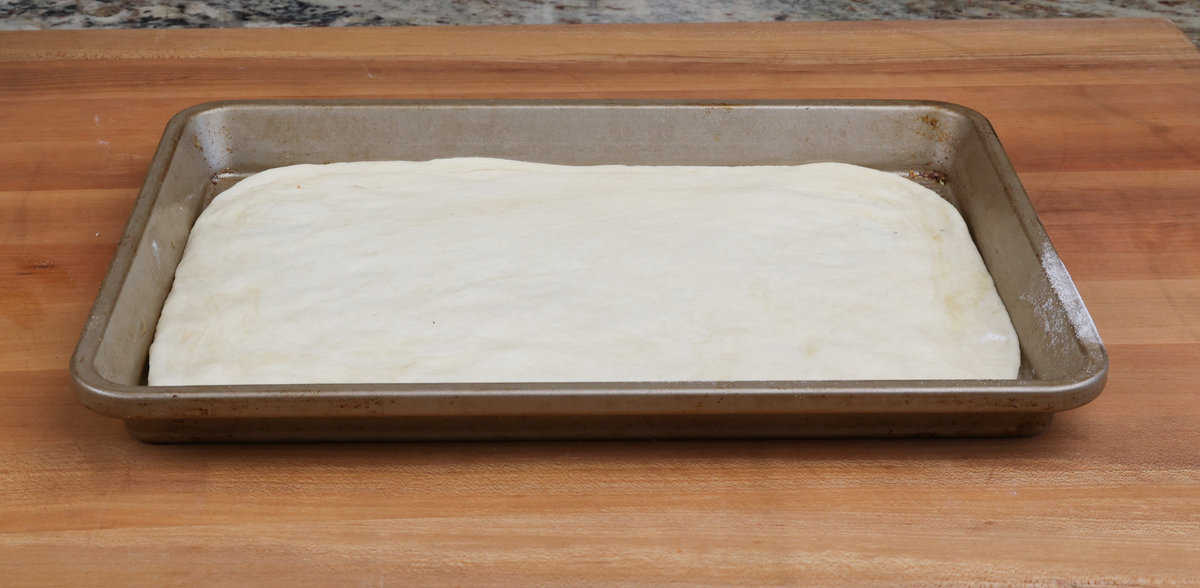
- Pinch the edges or fold them over to form a crust.
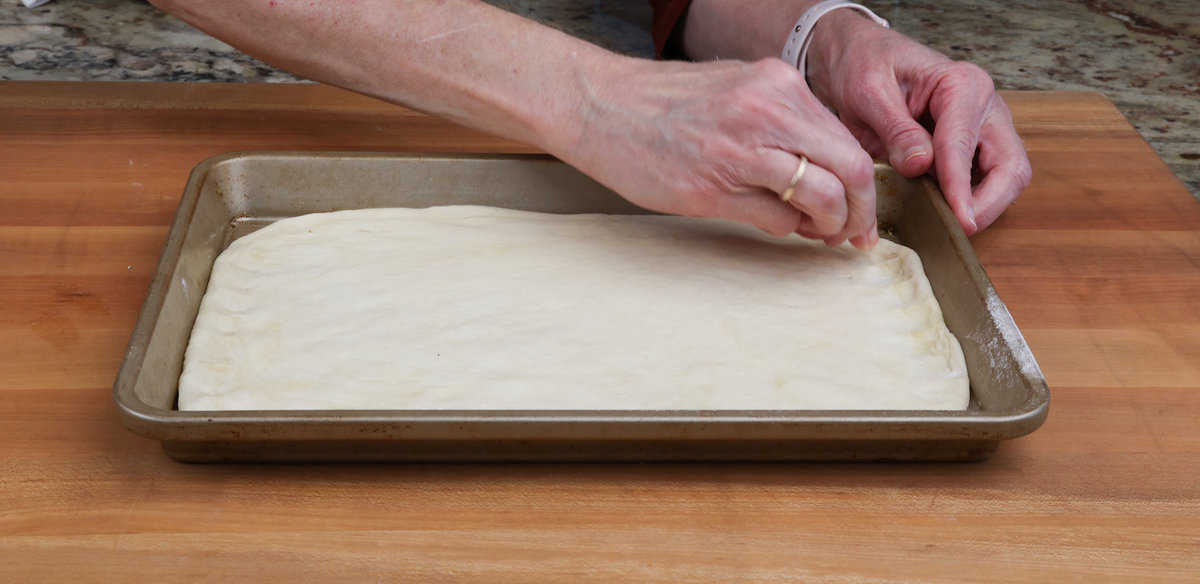
- Use a fork to poke holes over the dough to prevent any bubbles from forming while it bakes.
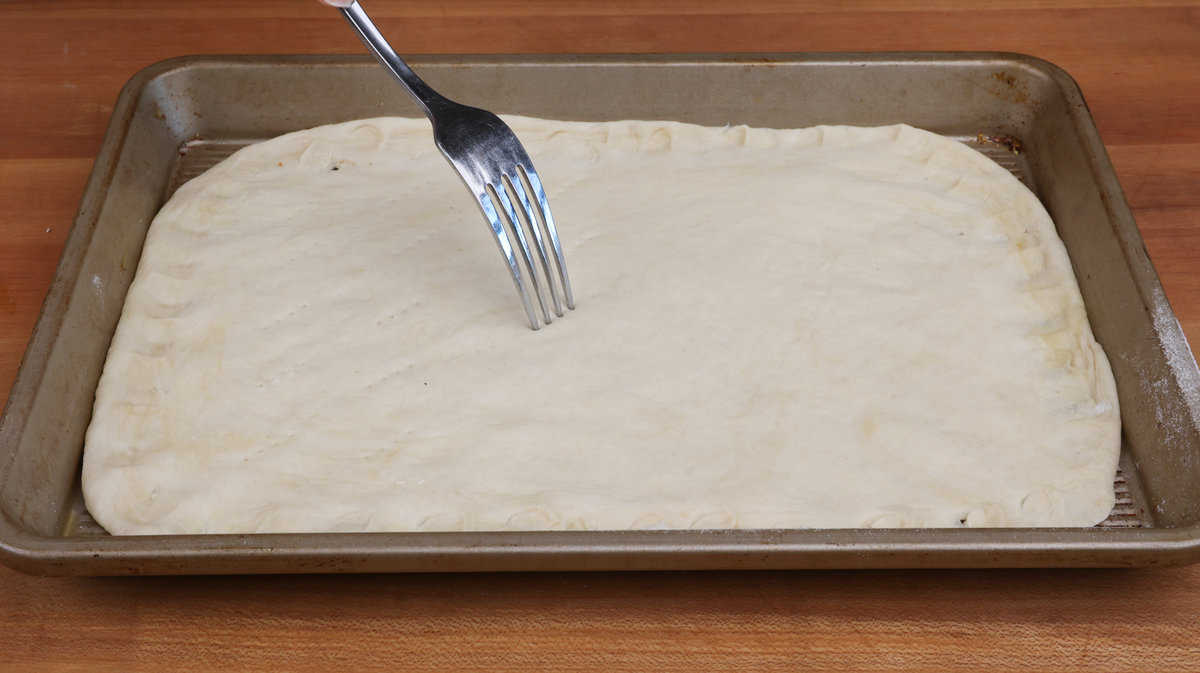
- Brush the top of the crust lightly with olive oil. Add the sauce in a light layer and spread it all around the pizza, leaving about 1/2-inch space around the edges.
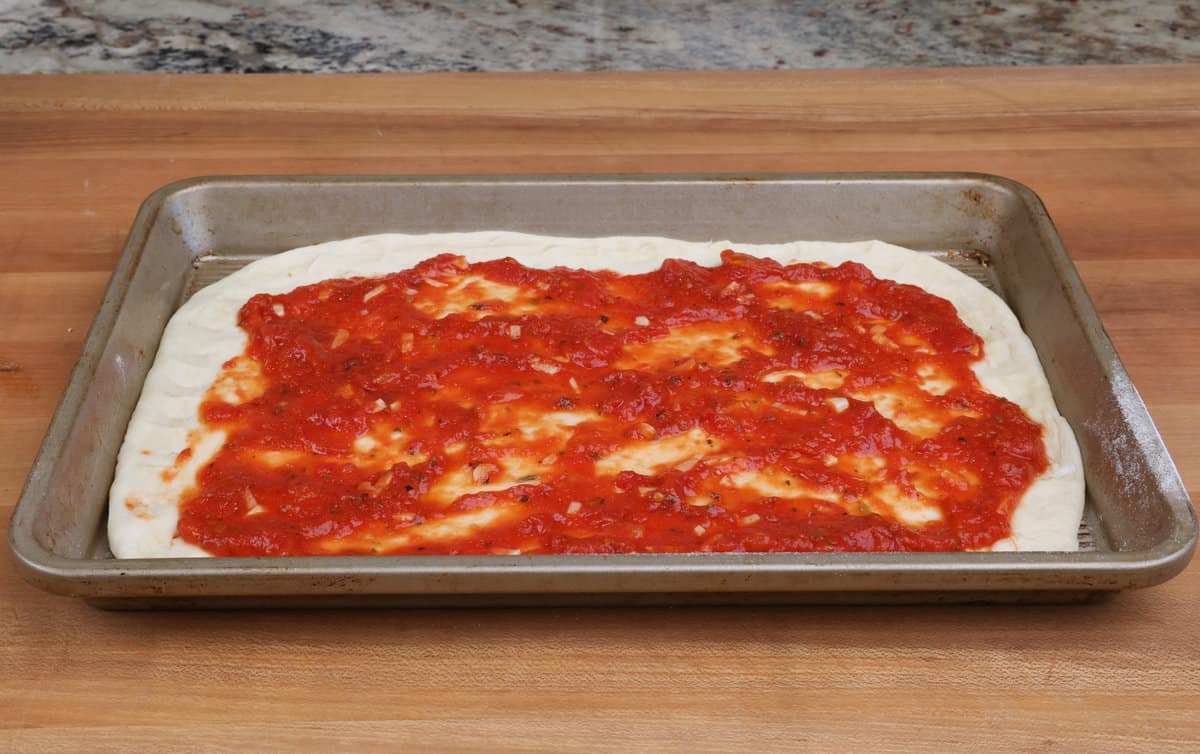
- Sprinkle the pizza with shredded mozzarella cheese.
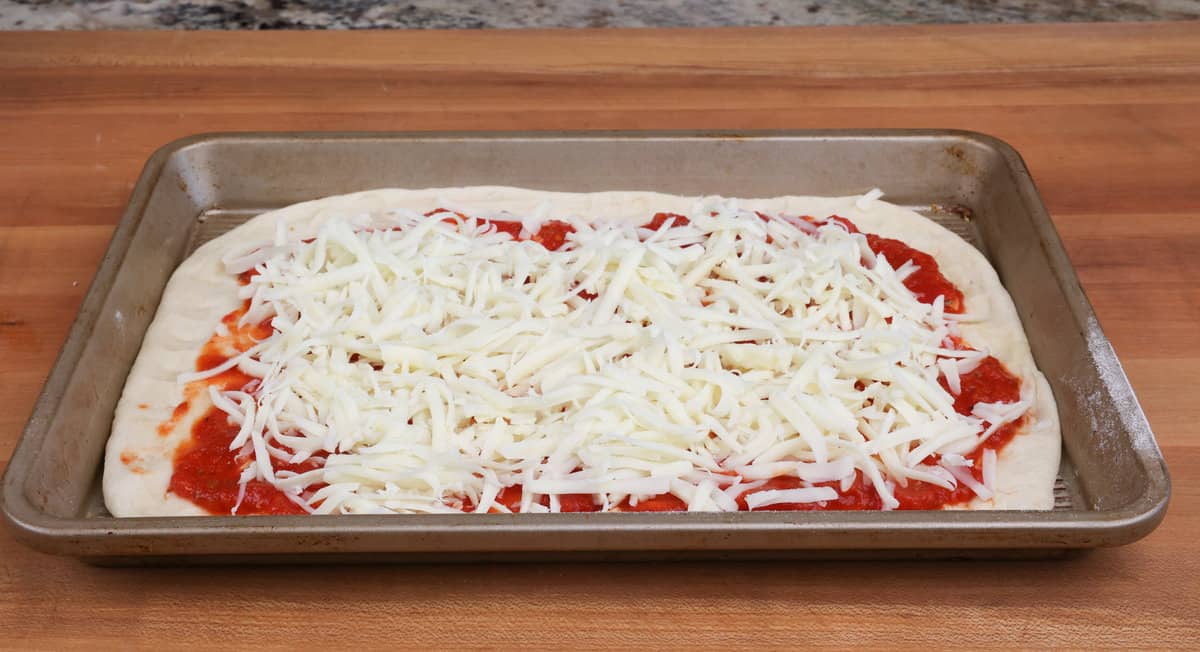
- Top the pizza with slices of pepperoni.
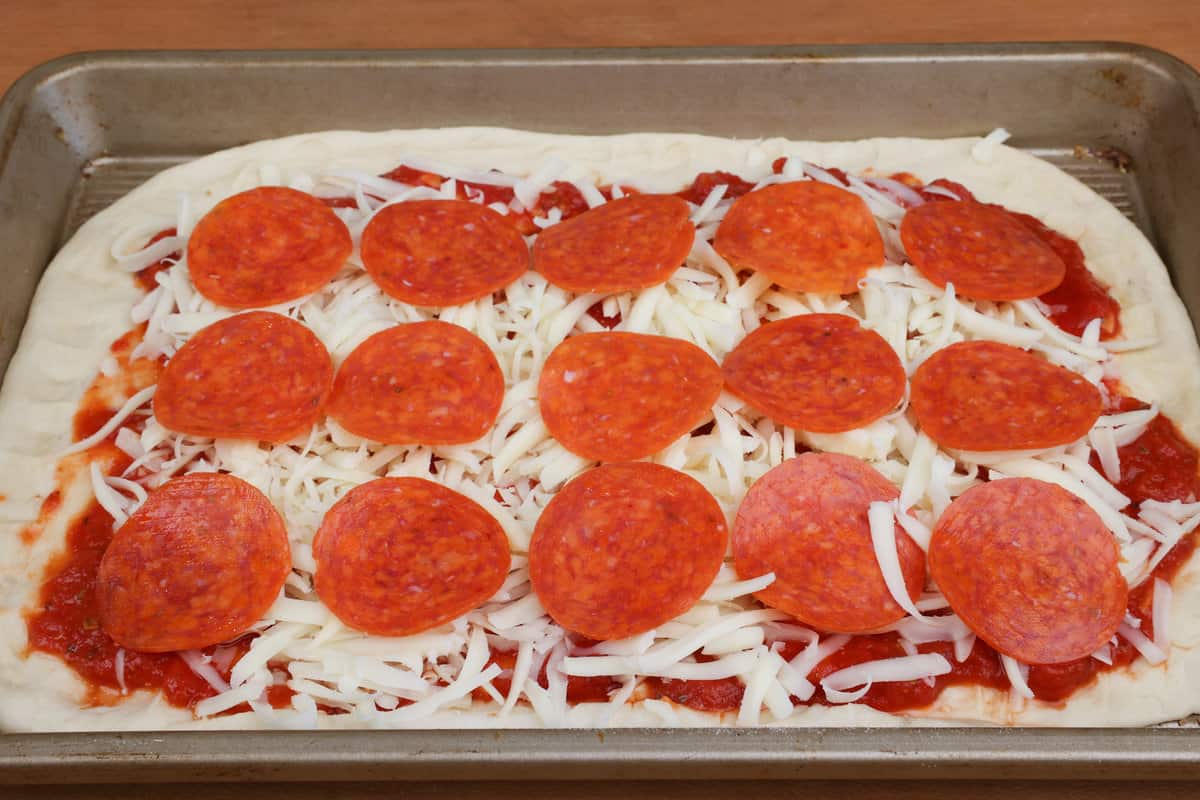
Cook the pizza
- Place the pizza in a preheated 400°F (200°C) oven for 18-20 minutes or until the cheese has melted.
- Slice and enjoy!
Note: The photos show a thin-crust pizza. To make a thick-crust pizza, don’t roll the dough out as thin.
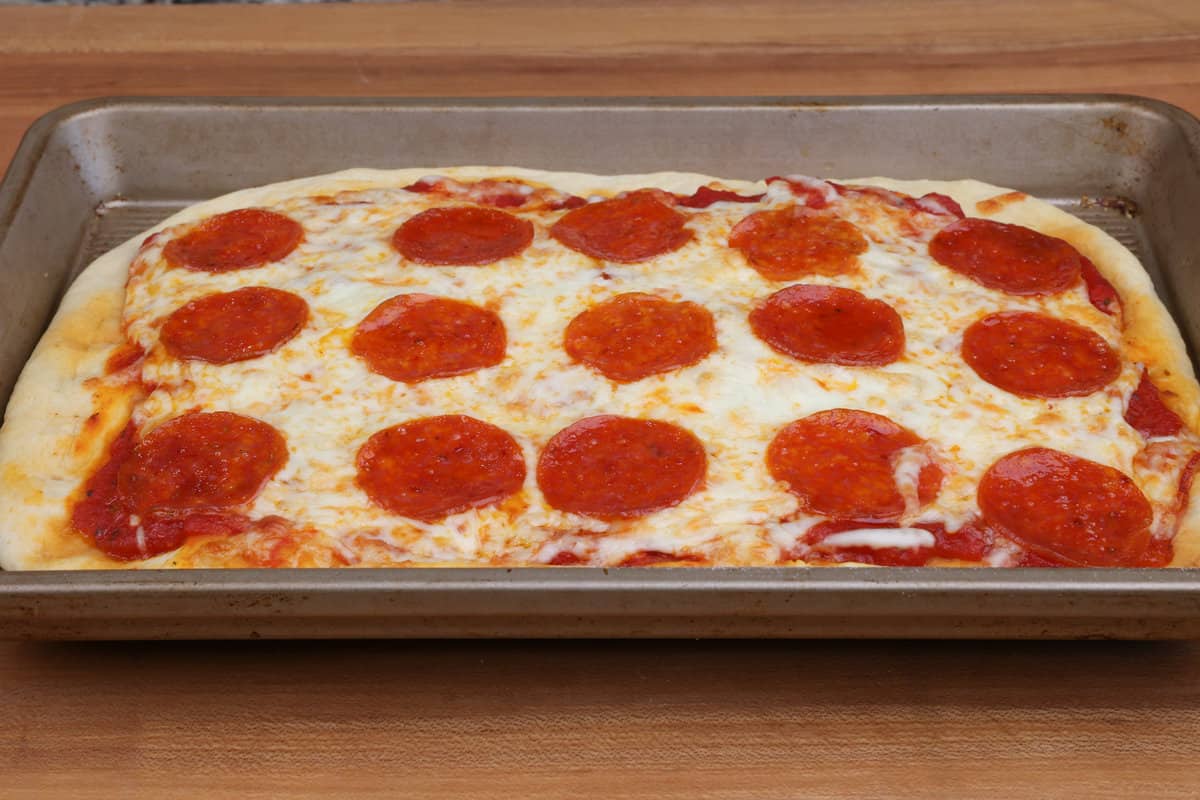
Storing Your Leftover Personal Pan Pizza
Got some slices left? No worries! Properly storing your leftover personal pizza ensures you can enjoy it later. To keep it fresh, wrap each individual slice tightly in plastic wrap. Stored this way, your pizza will remain delicious for up to 4 days in the refrigerator.
Expert Tips
- Preparation is Key: Before diving into the cooking process, read the entire recipe and check out the Ingredient Notes. This section offers valuable insights on using different types of yeast and available ingredient substitutions to customize your pizza.
- Time-Saving Hacks: While homemade dough yields the best crust, you can save time by buying pre-made dough. Many grocery stores carry ready-to-use pizza dough in their bakery sections, making it a convenient alternative.
- Cheese Matters: For the ultimate cheesy, melt-in-your-mouth experience, grate your own mozzarella. Pre-shredded cheese in bags usually contains anti-clumping agents, which can compromise the melting quality.
- Check Your Yeast: Make sure your yeast is active for a successful dough. You’ll know it’s ready if it dissolves in warm water and the mixture starts to bubble.
Each of these tips is designed to enhance your pizza-making skills, helping you achieve a delicious pizza every time.
Frequently Asked Questions
Opt for thinly sliced pepperoni from your local grocery store. This type is usually ideal for achieving that classic pizza flavor.
No, pepperoni can be used as-is straight from the package. If you’re using other meats like sausage or ground beef, those will need to be precooked before adding to your pizza.
The traditional method is to place the pepperoni on top of the cheese, giving it a slightly crispy texture as it bakes. If you like, you can also sprinkle some additional cheese over the pepperoni for an extra cheesy touch.
Absolutely. To make ahead, simply prepare the dough, form it into a ball, and lightly coat it with olive oil. Place it in a covered bowl and refrigerate for up to 3 days. To use, allow it to reach room temperature (about 30 minutes), punch it down and let it rest again, covered for about 20 minutes. Finally, form it into your preferred shape and add your favorite toppings..
To freeze pizza dough: After letting the dough rise, shape it into a ball and coat with a bit of olive oil. Freeze it on a sheet pan lined with plastic wrap for around 2 hours. Then, transfer the frozen dough ball to a zip-top bag, removing as much air as possible before sealing. Store in the freezer for up to 3 months. When ready to use, thaw overnight and let it come to room temperature before shaping and adding toppings.
Explore More Mini Pizza Options
In the mood for more pizza but want to keep it on the smaller side? We’ve got you covered! Expand your mini pizza repertoire with these delicious and creative alternatives that cater to a variety of tastes and dietary preferences.
- Detroit Style Pizza: A square-shaped, deep-dish pizza with a crispy crust and layered toppings.
- French Bread Pizza: A quick and easy option that uses French bread as the base. It’s a great way to repurpose leftover bread.
- Portobello Mushroom Pizza: Perfect for those looking for a low-carb option, this recipe uses a portobello mushroom cap as the crust.
- Pizza Bowl: All your favorite pizza toppings served in a bowl without the crust. Ideal for a gluten-free or low-carb meal.
- Crustless Pizza Quiche: A savory, crust-free quiche that brings together all the flavors you love in traditional pizza.
Ways To Use Leftover Ingredients
If you have any ingredients leftover from this recipe, check out our Leftover Ingredients Recipe Finder or you might like to consider using them in any of these single serving and small batch recipes:
If you’ve tried this personal size pepperoni pizza with homemade dough and pizza sauce or any recipe on One Dish Kitchen please let me know how you liked it by rating the recipe and telling me about it in the comment section below.
Also, if you take a picture please tag us on Instagram (@onedishkitchen) we’d love to see it!
Personal Pepperoni Pizza
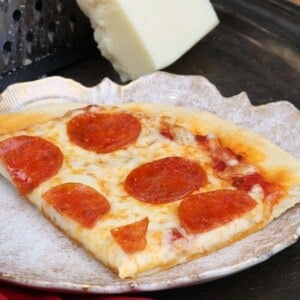
Ingredients
For the pizza crust
- ⅓ cup warm water (between 100-110°F)
- 1 teaspoon active dry yeast * see notes below if using instant yeast
- ½ teaspoon sugar
- ¼ teaspoon salt
- ¼ teaspoon garlic powder
- 1 tablespoon olive oil , plus 1-2 teaspoons more for greasing the bowl and brushing over the top of the pizza dough before baking
- 1 cup all-purpose flour
For the pizza sauce
- ½ tablespoon olive oil
- 1 clove garlic , minced
- ½ cup canned crushed tomatoes (4-ounces)
- 1 teaspoon tomato paste
- ¼ teaspoon sugar
- ¼ teaspoon dried basil
- ¼ teaspoon salt
For the pizza
- 1½ cups shredded mozzarella cheese (5-ounces)
- 15 slices pepperoni (1-ounce)
Instructions
Make the crust
- Add warm water to a large bowl.Pro Tip: An instant-read thermometer is an accurate way of checking water temperature. The water should be between 100-110°F. If the water is too warm (over 130°F), it will kill the yeast. If you don't have a thermometer, feel the water with your fingertips. Water should be comfortably warm, not at all hot.
- Add yeast to the water. Wait about 2 minutes until you see bubbles forming. The mixture should look slightly foamy.
- Stir in the sugar, salt, garlic powder, and olive oil.
- Add in the flour and mix the dough with a spoon until the dough comes together. If necessary, add a bit more flour so the dough can be worked without feeling too wet.Your dough will be shaggy and lumpy but will become smooth after kneading.
- Turn the dough out onto a lightly floured surface. With lightly floured hands, knead the dough for 3 minutes. Add more flour, a teaspoon at a time, if the dough remains too sticky to knead. After kneading the dough should feel soft and smooth.
- Lightly grease a large bowl with oil. Place the ball of dough in the bowl, turning it to coat all sides in the oil. Cover the bowl with plastic wrap, aluminum foil, or a clean towel. Allow the dough to rise in a warm, draft-free place until it has doubled in size, about 30 minutes.Pro Tip: Dough won't rise if the room you're using is too cold. I often put the dough in my oven to rise. To do this, preheat your oven for 1 minute, turn it off, and place the dough bowl inside. Ensure the oven doesn't get too hot or you'll need to wait for it to cool off. Sometimes, just leaving the light on in your oven will provide enough warmth without turning on the oven.
Make the pizza sauce
- While the dough is resting and rising, heat olive oil in a 1-quart saucepan over medium heat. Add minced garlic and cook, stirring frequently for 30 seconds.
- Add crushed tomatoes, tomato paste, sugar, dried basil, and salt. Stir to combine.
- Reduce the heat to low and simmer for 15 minutes, stirring occasionally.
Assemble the pizza
- Preheat the oven to 400°F (200°C).
- Punch the dough down to release the trapped air. Transfer the dough to a lightly floured work surface. With lightly floured hands or a rolling pin, roll the dough out into a circle or press it into a lightly greased small rectangular pan.Pro Tip: I find that a 9×13-inch baking sheet is a perfect size to use. If you're having trouble getting the dough to roll out as thin as you'd like, let the dough rest under a kitchen towel for 10 minutes, then continue to roll out.
- Pinch the edges or fold them over to form a crust.
- Use a fork to poke holes over the dough to prevent any bubbles from forming while it bakes.
- Brush the top of the crust lightly with olive oil. Add the sauce in a light layer and spread it all around the pizza, leaving about ½-inch space around the edges.
- Sprinkle the pizza with shredded mozzarella cheese.
- Top the pizza with slices of pepperoni.
- Bake for 18-20 minutes or until the cheese has melted.
Notes
-
- Preparation is Key: Before diving into the cooking process, read the entire recipe and check out the Ingredient Notes. This section offers valuable insights on using different types of yeast and available ingredient substitutions to customize your pizza.
-
- Time-Saving Hacks: While homemade dough yields the best crust, you can save time by buying pre-made dough. Many grocery stores carry ready-to-use pizza dough in their bakery sections, making it a convenient alternative.
-
- Cheese Matters: For the ultimate cheesy, melt-in-your-mouth experience, grate your own mozzarella. Pre-shredded cheese in bags usually contains anti-clumping agents, which can compromise the melting quality.
-
- Check Your Yeast: Make sure your yeast is active for a successful dough. You’ll know it’s ready if it dissolves in warm water and the mixture starts to bubble.
Nutrition
The information shown is an estimate provided by an online nutrition calculator. It should not be considered a substitute for a professional nutritionist’s advice.
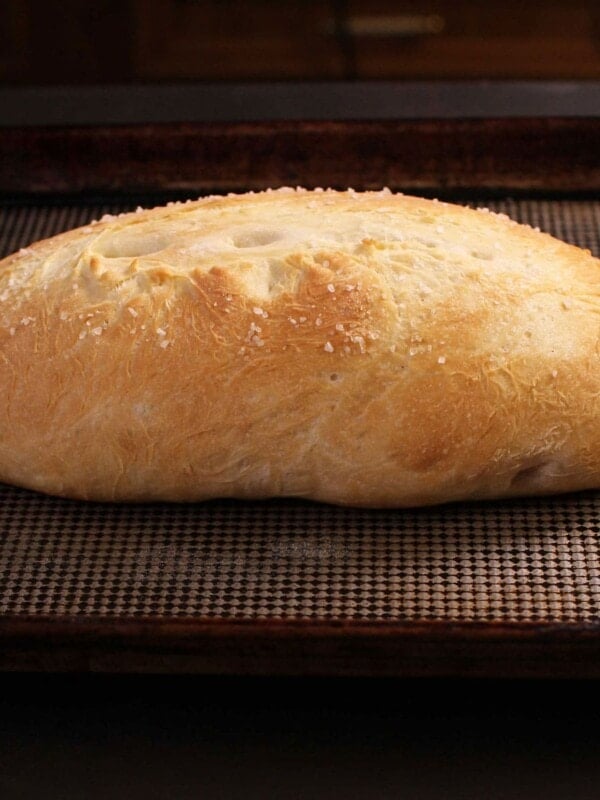
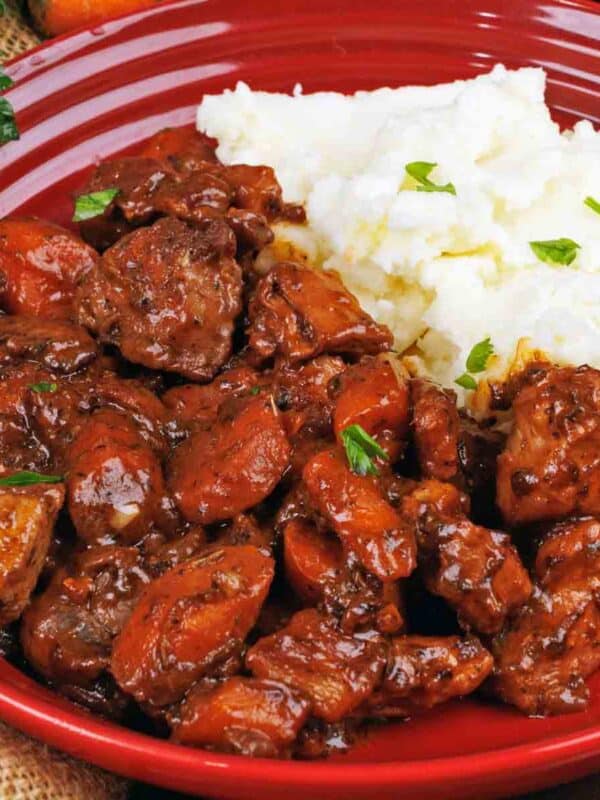
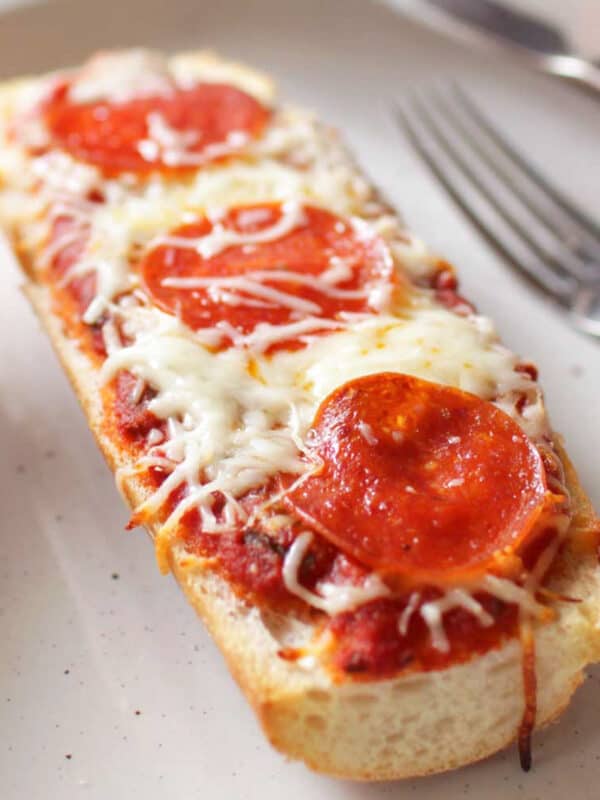
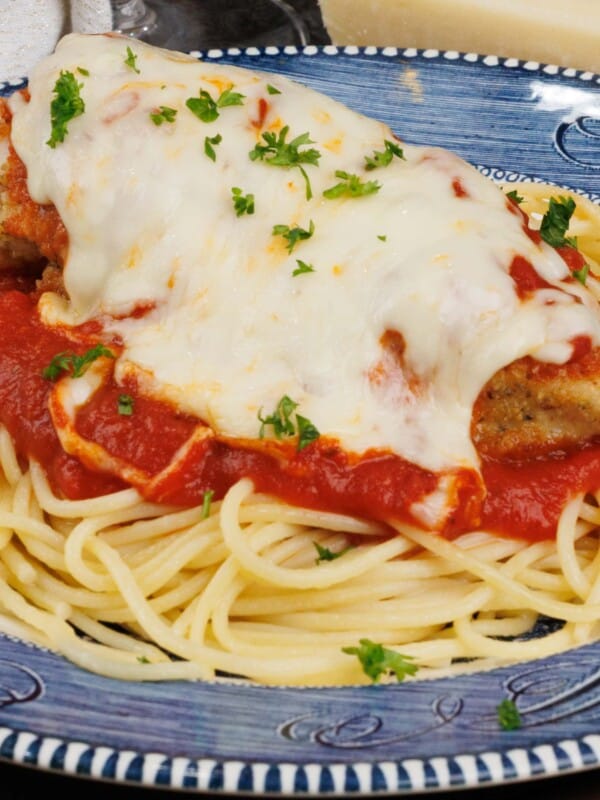
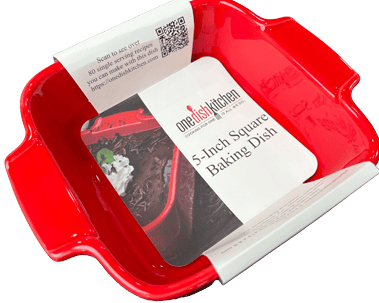










Made this over the weekend, it was great.
Terrific recipe.